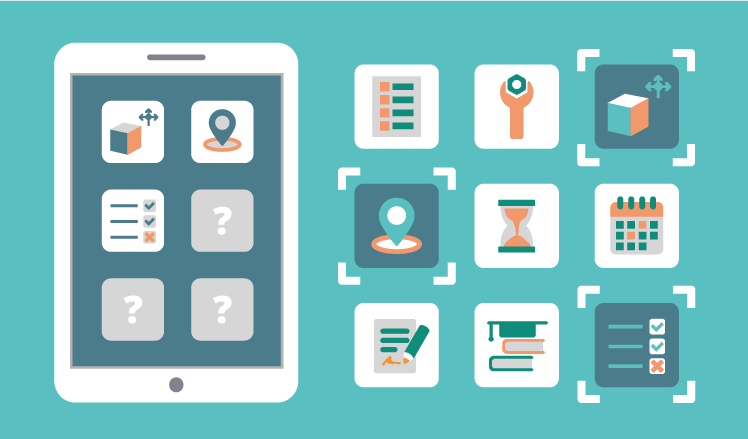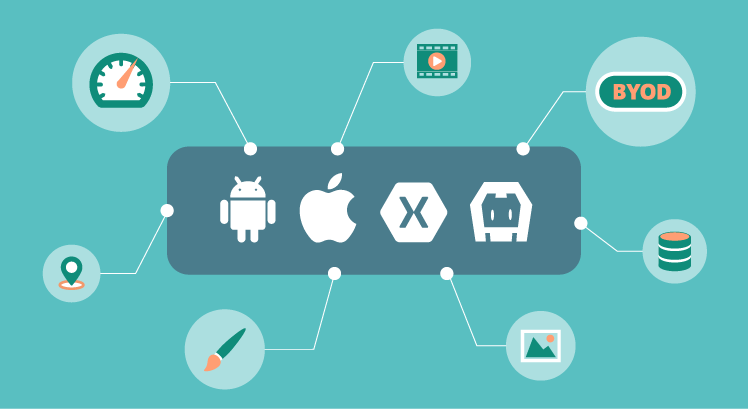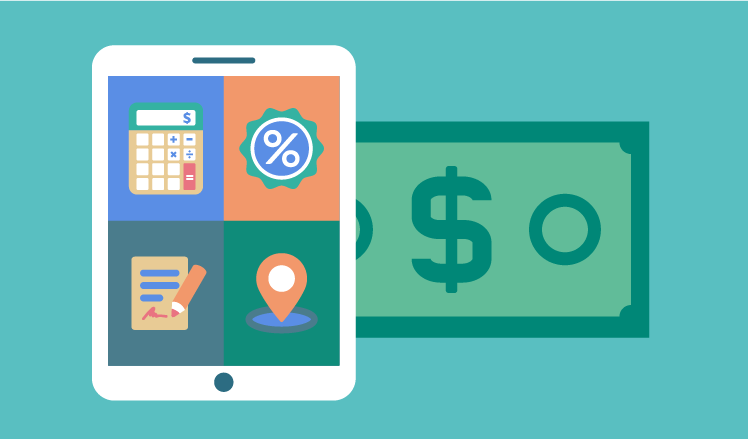Make Your Sales More Effective with a Field Sales App
Thanks to technologies, sales representatives can be much more effective in the field today than they have ever been before. Field sales applications can offer completely new methods of product presentation, helping sales representatives to make a bigger impact on customers and eventually boost sales.
ScienceSoft’s mobile consultants offer you to take real steps toward developing your own fields sales app and talk about its possible functionality in detail.

1. Decide on the requirements
By all means, a mobile app has to be convenient in use and should immediately display the information a user requests for. For the app to remain lightweight, you should avoid overloading it and instead clearly define what you would like it to do.
For example, simply creating a mobile replica of a company’s CRM would be a waste. First of all, it’s a complex and expensive project. Secondly, the entire database of all customers and communication with them is too difficult to navigate on a mobile device screen. And what’s even more important, a sales representative is very unlikely to actually need and use all that information.
There’s much more to the idea of a field sales app than just a copy of an existing customer database, and you can come up with the functionality your company would take advantage of.
Product catalog
A detailed list of a company’s products turns a mobile app into a real showcase. It allows a sales representative to demonstrate multiple photos of a product (unlike in .pdf or printed catalogs, the amount isn’t limited to only 1 or 2 images) or even play client-targeted videos of product installation or utilization. Also, your employees would need just a single click to tell a customer accurate product details, stock availability or an up-to-date price.
Configuration tool
With some products, sales representatives may feel that a mere catalog isn’t enough and that they need more freedom while demonstrating them. This is relevant for configurable products (such as complex ventilation or industrial motor systems) or products that are usually bought in a set (for instance, bathroom or kitchen appliances).
Using a configuration tool, a sales expert can virtually arrange a composition of requested items and show a customer the final result. Besides, they’ll have the price for the configuration calculated automatically.
Forms and questionnaires
Paperwork and fieldwork are two complete opposites. Still, sales representatives have to capture a lot of useful information while communicating with customers on premises. A mobile app can contain readymade electronic versions of feedback surveys, customer requirements questionnaires or even B2C contracts.
Entered in these forms digitally, field data will later be uploaded into a company’s CRM and from there, it can assist in sales representatives’ daily work as well as in the marketing department’s analysis.
But to make this kind of information exchange real, you should have the right architecture.
2. Include the backend in your requirements
To enable easy communication between a field sales app and other parts of your company’s IT infrastructure, you should have a backend developed for it. A server-based application can then be smoothly integrated with such business solutions as CRM, ERP, PLM, from which it will request data when necessary. The app will also be able to upload data directly to the server, making it available for all coworkers.
3. Choose the right device…
Fitting an enterprise application into a 4-5” smartphone screen is a tough task for any UI/UX developer. Besides, your sales representatives won’t be happy with the result of such a project, since they definitely need more room for action to make the best of the app features.
That’s why we suggest tailoring field sales software to tablets. About 8-10” of virtual space will let your sales force feel comfortable while scrolling a showcase, modifying products in a configurator, and while inputting data in the forms.
4. ... and the right platform
Look around, and you’ll find tips for choosing the right platform right in your very office. If your company sticks to iOS/Android devices only, you already have the answer. Yet if it welcomes the BYOD policy, you should consider going cross-platform with your future app.

Cordova is a cross-platform tool that is perfectly suitable for development of a concise showcase or a simple form-filling tool. The platform is, however, not fit for heavy graphics or complex catalog structures, so you should keep your images simple and the number of items quite low. Forms and questionnaires are easy to implement with Cordova as well, but, due to the platform’s limitations, their design may appear rather poor.
In case you need something more complex, you can choose a powerful cross-platform tool Xamarin. With Xamarin.iOS/Android you can get the UI of your app tailored to look exactly like native. If you don’t mind a common design though, you can opt for Xamarin.Forms and still take advantage of Xamarin’s 100% native performance.
Use-case: a field sales app for telecom
Finding new customers is the main challenge and, at the same time, one of the main objectives of the telecom companies. Their field sales force are basically headhunters, whose job is to draw people to their side and whose productivity determines the growth of their company’s business. Yet, attempts at being argumentative and persuading at the door of a customer is a challenge on its own.
What exact features of a field sales app can address the challenges of the telecom industry and support the sales force in their activities?

Tariff plan calculator
By catering to a wide audience of various age, gender, financial and marital status, telecoms have to consider multiple factors and include diverse options in their offerings. Gradually, these factors mount up and become too complex to be advertised, explained, or targeted directly even by the most savvy salespeople.
Using a field sales app with a tariff plan calculator can make things easier. The calculator contains a number of parameters that describe various conditions and help to assemble a customer’s preferences and characteristics. Once the customer’s persona is created, the app analyzes the data, goes through the provider’s existing tariff plans and displays only the most suitable ones.
Additionally, a field sales app with such a feature can be used to tailor solutions to meet customers’ needs and create individual tariff plans for them. This can come in useful for representatives of internet or mobile service providers: after a customer tells them the speed, the amount of data, or a number/type of calls they’d like to have, a sales rep can enter the requirements in the app, calculate the price and subscribe the customer for a personalized plan.
Special offers and sales promotions
Systems of discounts and special offers are usually as complex as tariff plans. Sales reps (especially those who are new to the job) may have trouble bearing them all in mind, whereas telling a customer about the discount they will get can sometimes help to close a deal.
A special offer liability analysis feature of sales apps can cut the number of such understatements down to zero. By inputting the necessary data in predefined fields, a sales representative would know for sure if a customer falls under any special offer.
Survey and contract forms
Data gathered in the field (for instance, information about data cabling) is important for network development, while signing contracts on-site is indispensable for a better conversion. However, in both cases sales reps face the challenge of carrying either a laptop or a pack of papers around.
A telecom field sales app with templates of various documents reduces the necessary equipment of a sales representative to a mere tablet. Once filled in or signed electronically, surveys and contracts are automatically uploaded to the corporate server and can be easily retrieved at any time. Besides, when a sales rep needs to look up the information on any existing contract, they’ll have no problem downloading it even on-site.
Routing
Field sales are, by definition, a job that involves driving and meeting with customers on-site. This makes time and fuel important resources for sales reps.
The routing feature in a field sales app analyzes destination points and creates the most time- and fuel-effective routes. With no stress and anxiety about how to get from one point to another on time, salespeople can concentrate solely on doing their job.
This feature can also synchronize with the corporate server and receive prompt notifications. For instance, if a meeting is canceled or postponed, the app will update the route accordingly.
Overall benefits
Used on tablets, field sales apps for telecoms are convenient and smart tools to guide customers through the offerings, find the most suitable solution for them, and to have special offers applied automatically. What’s more, such mobile assistants can help a telecom company get rid of field paperwork by letting employees enter all the important information in ready-made forms and have customers sign contracts electronically. Finally, backed up by the routing feature, field sales turn into a stable, scheduled and productive line of work.
Implementation
You can try and see how a field sales app will work for you by implementing only one feature at first. Your project will be low-risk and cost-effective, and you will always have a chance to enhance functionality by adding new features.
In case you wonder how to tailor applications to the specifics of your business, ScienceSoft’s mobile consultants are always here to lend you a hand. We will gladly help you match features with your business challenges and develop a successful field sales app.

